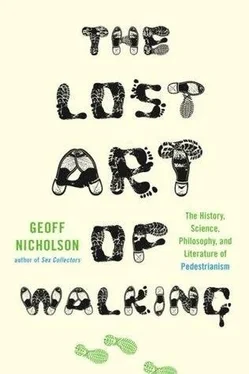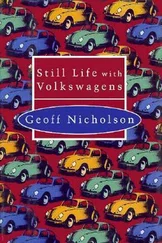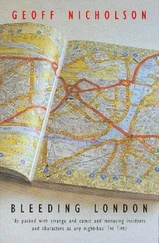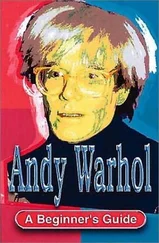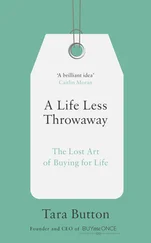The two saints spent the night in prayer and the next morning, knowing he was about to die, Paul asked Anthony to walk back to the monastery from which he’d come to pick up a robe that had belonged to Athanasius the Great and bring it back. Paul wanted to be buried in the robe.
Anthony did what was asked of him, walked for three days back to his monastery, picked up the robe, and began the journey back to Paul’s cave. On the third day of this walk, i.e., his ninth consecutive day of desert walking, Anthony had a vision of angels and prophets ascending to heaven with Paul the Hermit among them, a clear sign that Paul was already dead. And so it proved.
Finding Paul’s dead body in the desert cave, Anthony wrapped it in the holy robe as preparation for burial, but then found he was too weak to dig the grave. Two lions came running out of the desert, knelt beside the body of Paul the Hermit, roared in lamentation, then dug a grave with their paws before disappearing into the desert again.
It’s strange what you find yourself seeing when you’re ninety years old and have been walking in the desert for nine consecutive days.
I was in the Mojave Desert, in Death Valley, in early November. I was there to do some walking, and I’d gone to the general store in Furnace Creek, bought some supplies, and was sitting on a bench outside the store drinking a soda before setting off again.
One of the guys who worked there, a large, heavy, slow-moving man, walked by and said to me, ‘So, where you from?’
I said, ‘L.A.’
‘L.A.’, he repeated. ‘So how do you like walking in my desert? I bet you think it’s all a big nothing’.
Few things could have been further from what I actually thought about the desert, which I wasn’t much inclined to think of as ‘his’ or anyone else’s, but in an attempt to keep things simple I said, ‘I love the desert’.
The man grunted and softened a little, and told me that he was originally from the L.A. area, specifically Pasadena. Then he said, ‘If you walk on concrete for too long you start to think like a predator’.
I thought this was a great line, but then he added, ‘‘Cause everybody wants something from you’, which I thought rather spoiled the effect.
The less simple thing I might have said to him was, first, that I don’t think the desert is a big nothing at all, I actually think it’s a beautiful, intense, profoundly moving ‘something’, and then I’d have said that although by far the majority of my walking has been done in cities, and continues to be, I’ve also walked in a lot of places that are not cities. I’ve done my time walking in the great outdoors (not that cities are ‘indoors’ exactly), in forests, woodlands, wetlands, seashores, hills, even mountains so long as they were the walkable rather than the climbable variety, but it’s only in the desert that I’ve ever found anything that came close to giving a spiritual dimension to my walking, whereas others seem to find that spiritual dimension just about everywhere they look.
I’ve been trying to find where the phrase ‘walking in nature’ came from. I’m guessing its first use must have been an ancient one, and in itself it’s a perfectly harmless form of words. However, all too often it gets hijacked by what I might as well call New Agers. A quick browse among New Age walking sources will soon have you screaming for mercy as you’re told that nature is an unalloyed source of goodness, purity, benign intention, spiritual insight, higher consciousness, and (oh spare me) healing.
Here’s someone named Linda Leonard on the website livinglifefully.com:
‘I find nature so nourishing. I love to hike, especially in the mountains. When I’m walking in nature, I feel in awe of the wonder of creation. Nature is full of surprises, always changing, and we must change with it. In nature, the soul is renewed and called to open and grow’.
Here’s a blog entry from Stephen Altschuler, who calls himself the Mindful Hiker, which is also the title of a book he wrote:
‘Walking is not anything separate from life’, he bleats. ‘It is integral to life, especially walking in nature. Yesterday, I encountered a rattlesnake on the trail — came quite close to it — and I marveled at its wildness, the ferocity of its rattle as I almost stepped on it’.
Altschuler may not be the very worst of the New Age desert explorer he made himself out to be, but his observations certainly ring true. He writes:
‘And yet in the fullness of time Nature designs that this waste and all of earth with it shall perish. Individual, type, and species, all shall pass away — and the globe itself become as desert sand blown hither and yon through space. She cares nothing for the individual man or bird or beast; can it be thought that she cares any more for the individual world?’
Is that a religious thought or an antireligious thought? Is it some notion of being at one? It’s pretty much my version of nature that he’s describing: rough, scary, utterly indifferent. In the face of this, a walk seems like exactly what it is: something but not much, certainly not a means of salvation. It may be pleasurable and worth doing, it may stop you getting depressed, but in the end it’s just a walk. Why would you want it to be more?
I was born and brought up in England, so it was a long time before I ever set foot in a desert, though I was familiar with the concept. I’d seen it on-screen: in Road Runner cartoons, in cowboy movies, in Russ Meyer’s Faster, Pussycat! Kill! Kill ’, in any number of cheap science fiction movies, and in a few very expensive ones. The initial appeal was primarily visual. The desert appears in so many movies because it looks so good.
On the other hand, it never looked like a place you could actually go walking. It seemed too mythic, too otherworldly for that. When I eventually discovered you could drive a car out into the American desert, park at the side of a dirt road, and walk off into the distance, that was quite a moment, quite a realization, and I’ve been doing it ever since.
I know that some people find the desert frightening: all that space, all that isolation, all the terrible things that can happen to you. And of course I realize that terrible things really can and do happen out there, from dying of thirst to falling and breaking something to encountering Mansonite cults, but that’s part of what I like about it. Charles Manson at his trial: ‘I am the biggest beast walking the face of the earth’. Charles Manson at his 1992 parole hearing: ‘But there’s a line that man walks. All men walk a line. And I walk that line in prison’.
You have to be on your mettle when you’re walking in the desert, you have to take charge of yourself, you have to know what you’re doing. And to an extent the desert helps you. It sharpens up the senses, makes you more aware and more self-aware. I’ve never felt lonely in the desert.
♦
I’ve only been really lost in the desert once and, of course, once might have been more than enough. Ultimately it lacked drama because I lived, and because it was brief, certainly no more than a couple of hours, but it was a long couple of hours, and for all I knew they could have been the first of my last hours.
It was in Western Australia, about twenty-two miles outside the mining town of Kalgoorlie. I was with my then girlfriend and we’d just picked up a Land Cruiser in which we planned to do some not-too-serious off-roading and some walking. But that was ahead of us. On that afternoon in question we were making a minor foray into the desert, to get the lay of the land and the feel of the vehicle.
We drove out to a ghost town called Kanowna, which even by ghost town standards was a big nothing. There really was nothing worth seeing. There had once been twelve thousand people living there, along with their churches, hotels, breweries, and railway station, but there was no sign of any of these now, and although a few signposts had been put up indicating where a post office and courthouse had once been, they weren’t marking anything other than a few bits of rubble and piles of ancient tin cans.
Читать дальше
